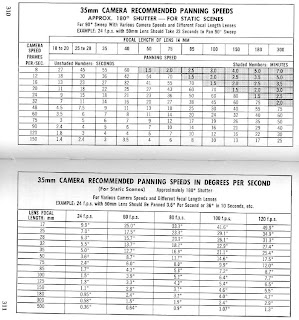Tips for Smooth Panning
long time no see?
your very own 'filmaker' is finally out of the darkness :-)
it's been long time since i posted anything. life has become very different during this time and i've been through many things. i finished my phd, stayed jobless for few months, then got a job in a software firm, moved from one place to another to another, etc. etc. anyways, it's a long story and not the topic of today's blog.
remember that i wrote in my last post that i will be making notes on the filmmaking as i learn new things along the road and post them here. though i didn't publish anything since my last entry, but i swear i learnt a lot of new exciting stuff, and my urge to become a filmmaker is growing day by day.
so back to the topic of 'making notes on filmmaking'. i don't know where to start? there are so many things i've been studying these days. but may be i won't be able to name all of them in one post. so for now, i will start with what i am learning right now. i am now reading about the "recommended panning speed".
sometimes you might have noticed the stuttering of images in the videos when panning especially when you pan fast. i've always wondered how to overcome this issue. frame rate and shutter speed/angle are the main issue i guess. ok, but what exactly is needed to avoid the pan 'strobes'? because the panning on the film certainly looks much smoother than it does on 24p video. my objective was to find if there exist some sort of 'rules of thumbs' in cinematography for making panning look smooth.
here is the summary of the guidelines, i found so far. a good read on this topic is this article.
1. prefer shallow depth of field as it smoothes the background and reduces the visible 'strobing'
2. low contrast situations are less vulnerable to 'pan strobes' than high-contrast, high detail situations. reducing the contrast of sharp verticals such as white doors on black walls helps reducing the judder in the panning.
3. panning along a centeral item in the picture, such as an actor, that the eye can lock onto would take the attention away from stuttering.
4. an old rule in the cinematography is, "the subject in the frame should either remain stationary or move slowly". a subject moving across the fame in less than 5-6 seconds will cause strobing.
5. on smaller screen, the judder is more prominent.
6. american cinematographer manual (edition 7, page 310, 311) gives a chart for 35mm camera recommended panning speeds for different framerates and focal lengths. (see below)

that's all i've for now. talk to you soon. i promise :-)
Labels: cinematography, filmmaking, judder, panning speed


2 Comments:
salaam, my friend.
sorry for contacting via this way.
i´m the speedmachine-rider you met at the ADFC radreisemesse in hamburg recently, hope you remember.
pleasee contact me via lars.reisberg(at)gmx.net
thanks - have a nice week ... Lars
HY I AM A MUSLIMS
Post a Comment
Subscribe to Post Comments [Atom]
<< Home